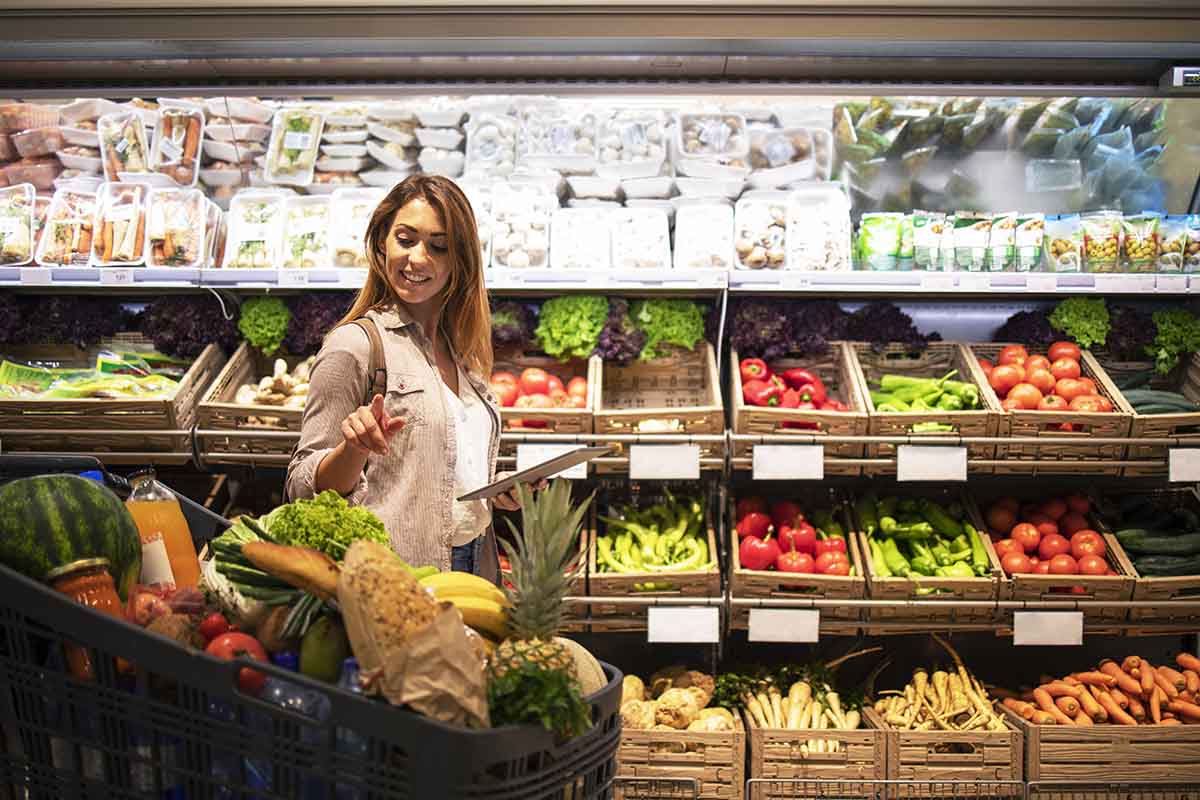Grocery stores are the backbone of our daily existence, fueling us with sustenance and necessities. But what lurks behind the aisles is a constantly shifting terrain that influences how we procure our groceries. Join us as we uncover eight critical components of this industry, offering insights into its inner workings and elevating your comprehension of this sector.
The Secrets of the Grocery Industry: Market Size and Growth
This industry is a force to be reckoned with in terms of size and momentum – it keeps growing! Recent studies report that this mega-industry was worth $8 trillion in 2021, with projections indicating a higher climb by 2025.
This uptrend is largely due to a combination of factors, including population expansion, shifting consumer preferences, and rising demand for convenience. If you’re not yet tapped into the grocery store game, you might want to start considering it!
Online Grocery Shopping
Online grocery shopping has blown up in recent years! Thanks to tech advancements and changing consumer behaviors, it’s become easy-peasy to order groceries online and get them delivered straight to your doorstep. And now, with the pandemic still causing chaos, even more folks are hopping on the online shopping bandwagon to reduce in-person interactions. Start saving time and effort (not to mention stress) – order your groceries online today!
Sustainable Practices
In today’s world, being mindful of our impact on the environment is of utmost importance, and this is reflected in the grocery store industry as well.
Retailers have adopted sustainable practices, from minimizing food waste to utilizing eco-friendly packaging materials to reflect the changing times. With an increased focus on locally produced goods, consumers have the power to support these sustainability initiatives by preferring retailers that prioritize such practices and opting for eco-friendly choices.
Health and Wellness
The grocery shopping experience has undergone a significant facelift as health and wellness take center stage. With a growing interest in fresher, organic, and nutritious foods, you can now find specialized sections within grocery stores that offer a variety of healthy alternatives. In addition, retailers are investing significantly in providing nutritional information and labeling to educate customers and help them make informed decisions about their food.
Eating well and feeling great about what you’re putting into your body has never been easier.
Private Label Brands
Discover the secret to saving money on groceries while enjoying top-quality products: private label brands, aka store brands. These exclusive products, developed and marketed by retailers, offer all the quality you’re used to at a fraction of the cost of national brands.
With savvy shoppers looking for ways to stretch their dollars, it’s no wonder that private-label brands have exploded in popularity, surpassing even trusted household names.
Technology and Automation
Innovative tech tools are revolutionizing the grocery shopping experience as retailers turn to automation and AI to streamline operations and enhance customer satisfaction.
Industry leaders use data analytics to provide personalized recommendations and targeted promotions, from self-checkout kiosks to digital shelf tags. Get a glimpse into the future of groceries and discover how tech is transforming the industry!
Competition and Consolidation
The grocery industry is fiercely competitive as several contenders compete for a market slice. Despite this, there’s also a trend where the big players are gobbling up smaller chains to extend their reach and reap the benefits of economies of scale.
As a result, this consolidation can boost the industry’s bargaining power, enhance supply chain efficiencies, and ultimately offer better deals for consumers.
Changing Consumer Expectations
Modern shoppers yearn for more than just basic needs but value convenience, personalized experiences, and cost-effective products. Retailers must adapt to these changing trends by creating diverse product offerings, enhancing customer service, and streamlining delivery options. Remaining current with the latest consumer preferences is imperative to compete effectively in the marketplace.
Conclusion
As essential as it is ever-changing, the grocery industry remains a dynamic sector that shapes itself to meet the burgeoning needs of consumers. This vital industry is always in flux, from cutting-edge technologies and eco-friendly initiatives to online shopping and the proliferation of private-label brands.
Staying ahead of the curve is key, and by understanding these crucial elements of the grocery store landscape, consumers can make savvy choices that keep them informed and empowered.




















